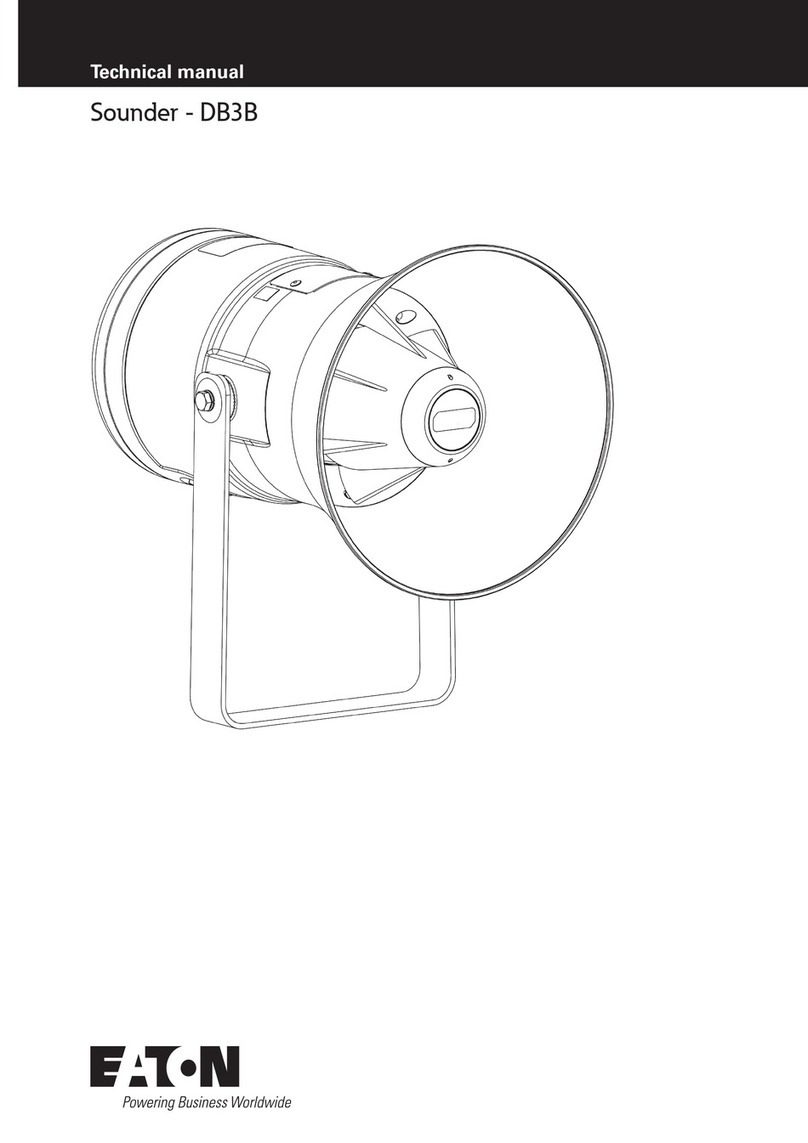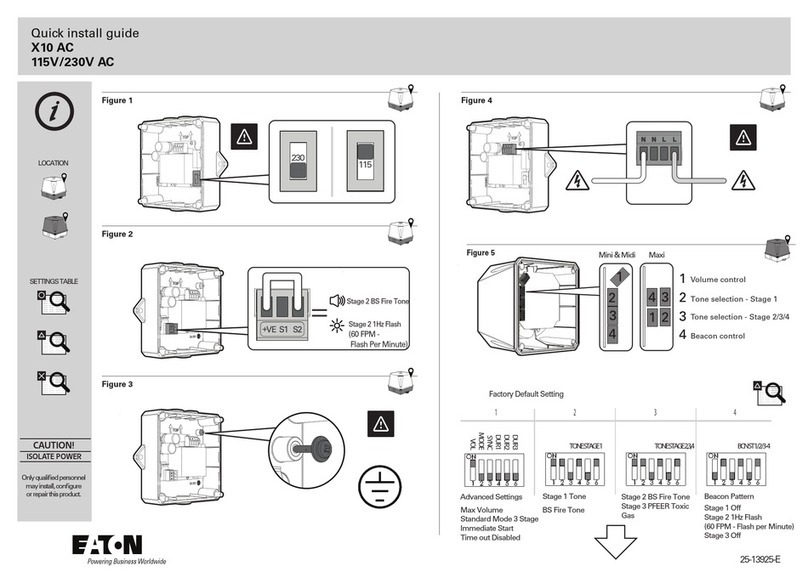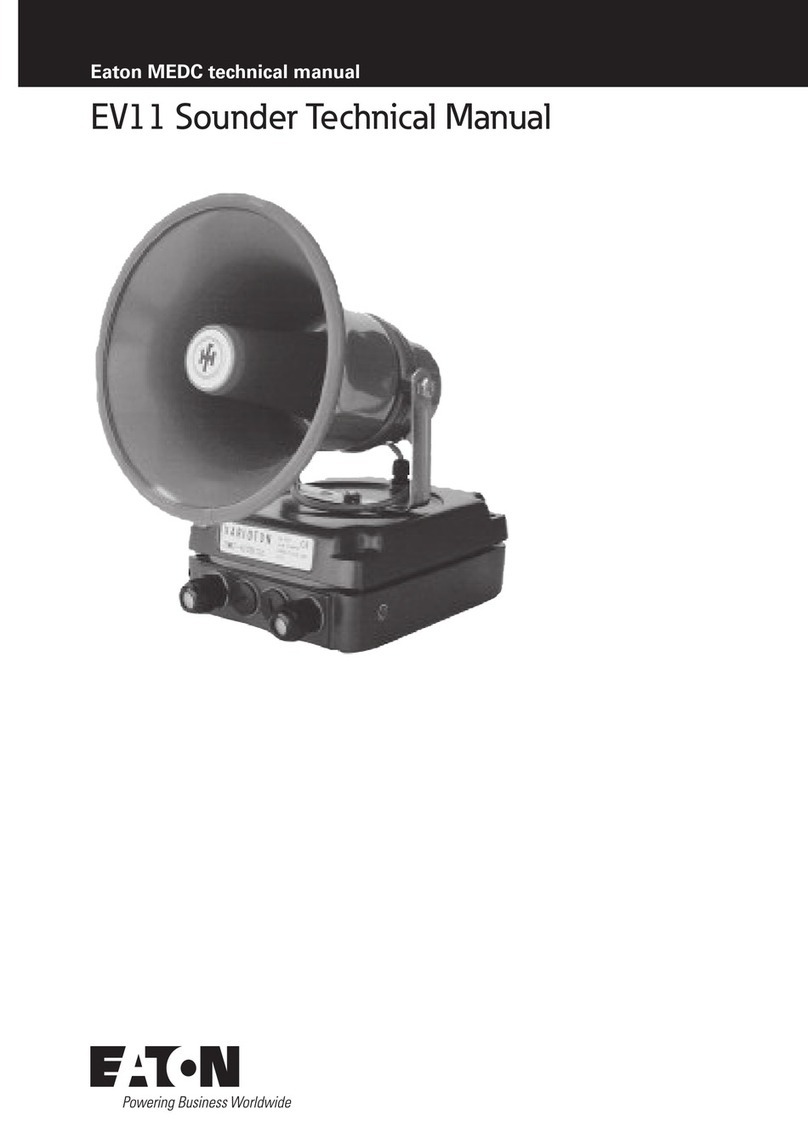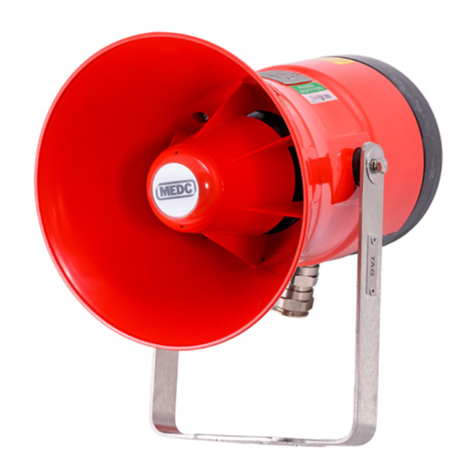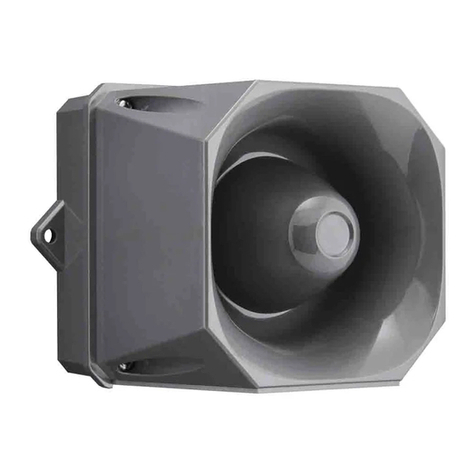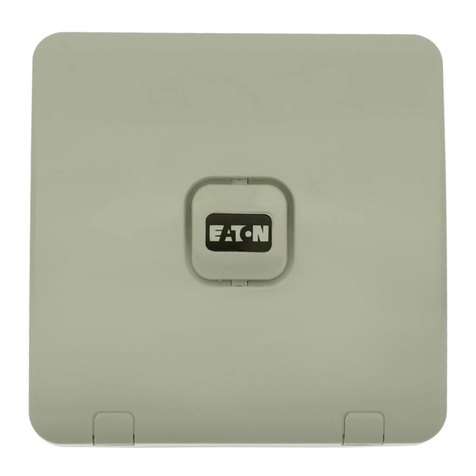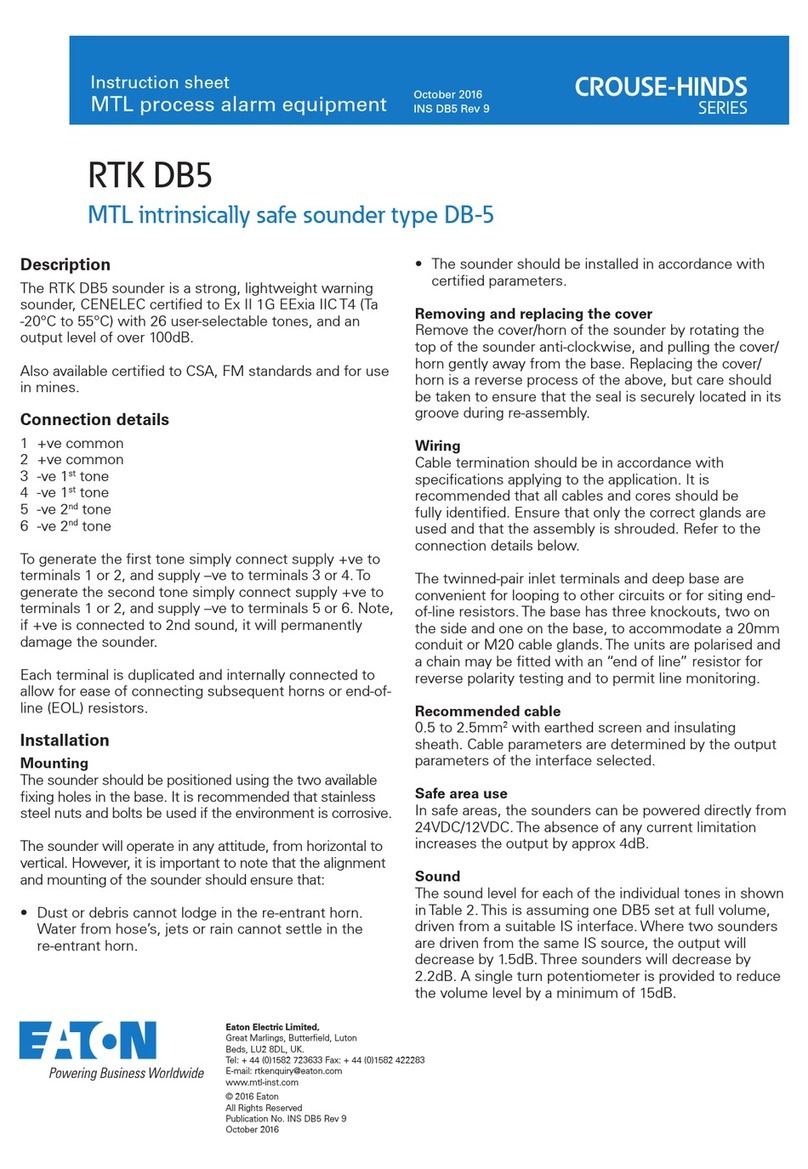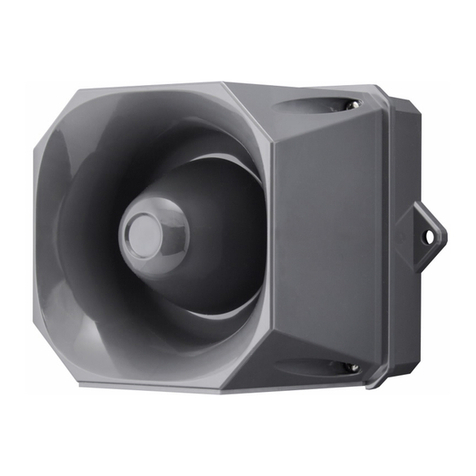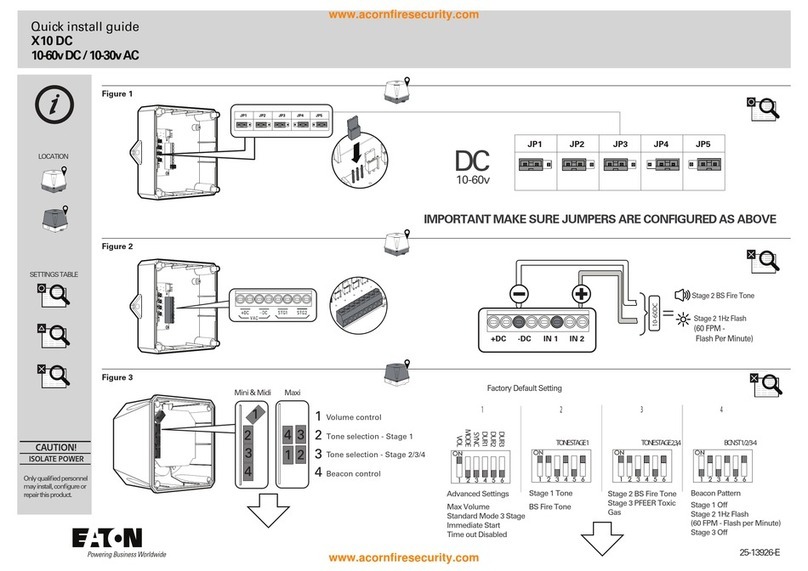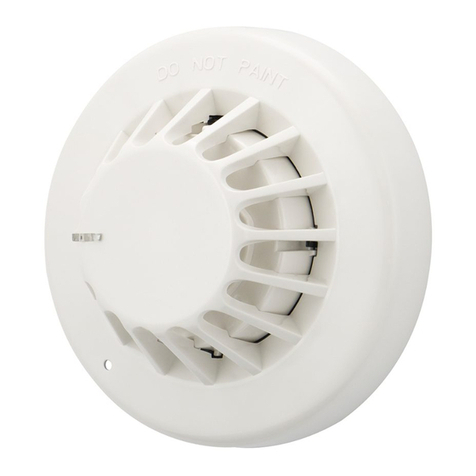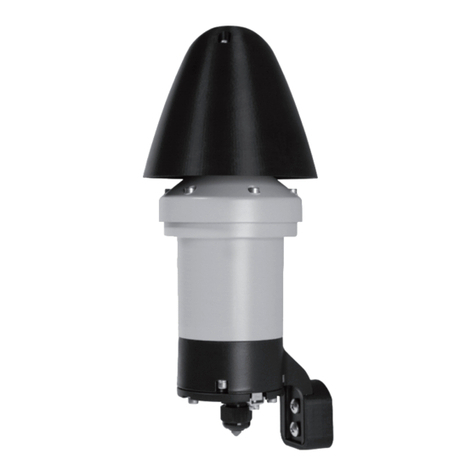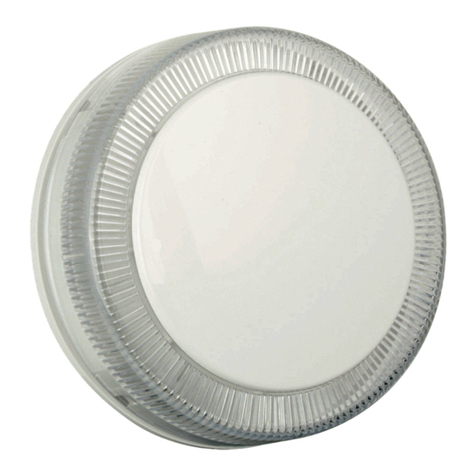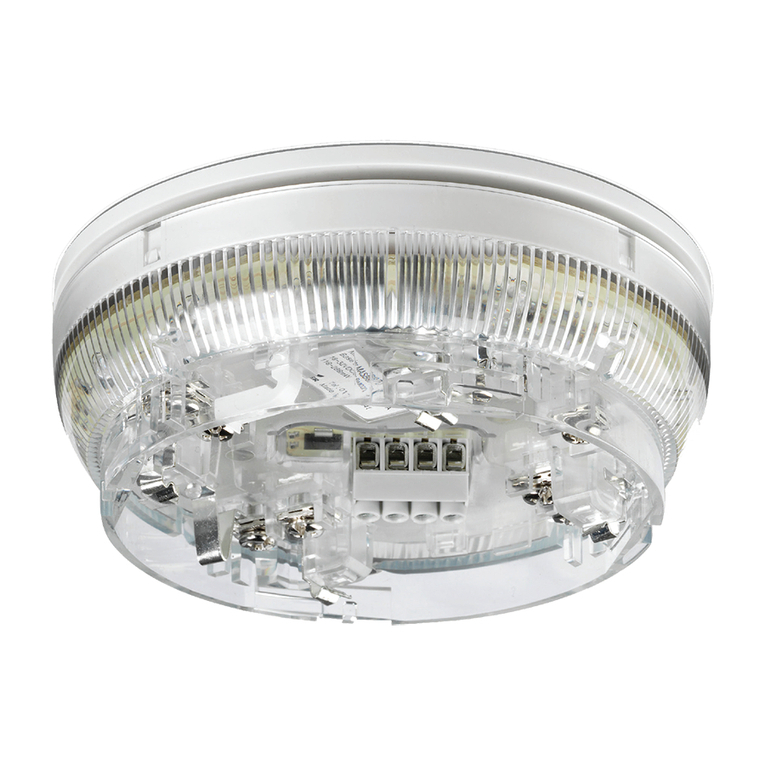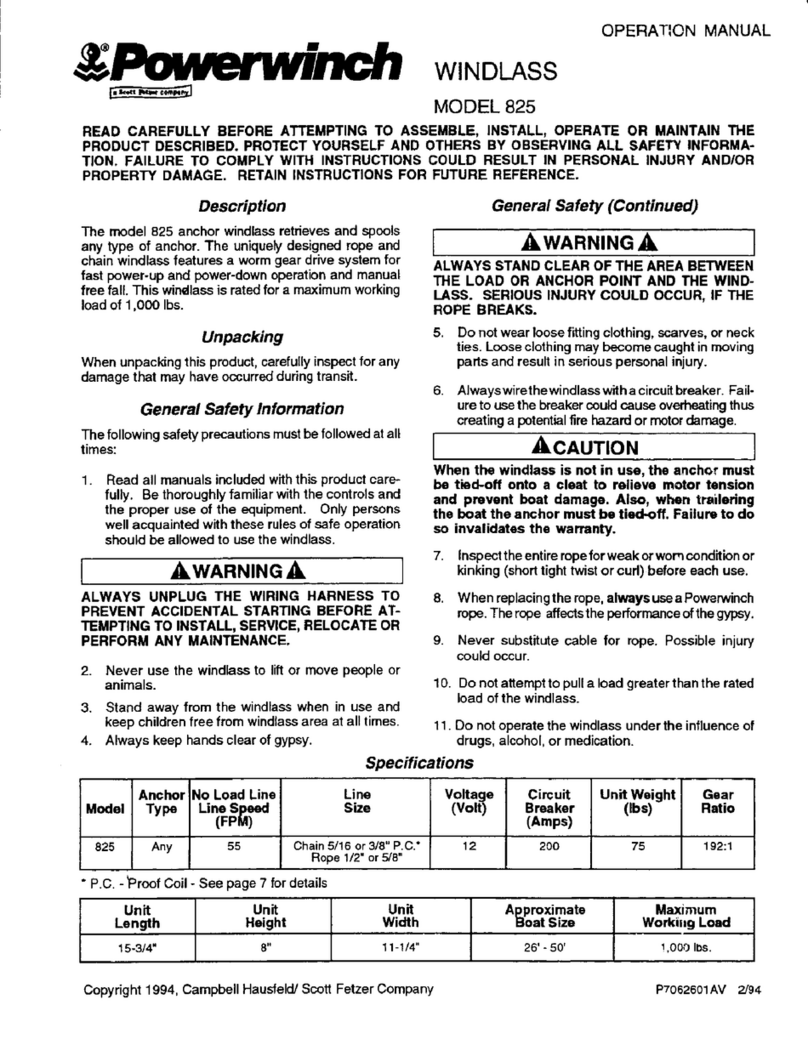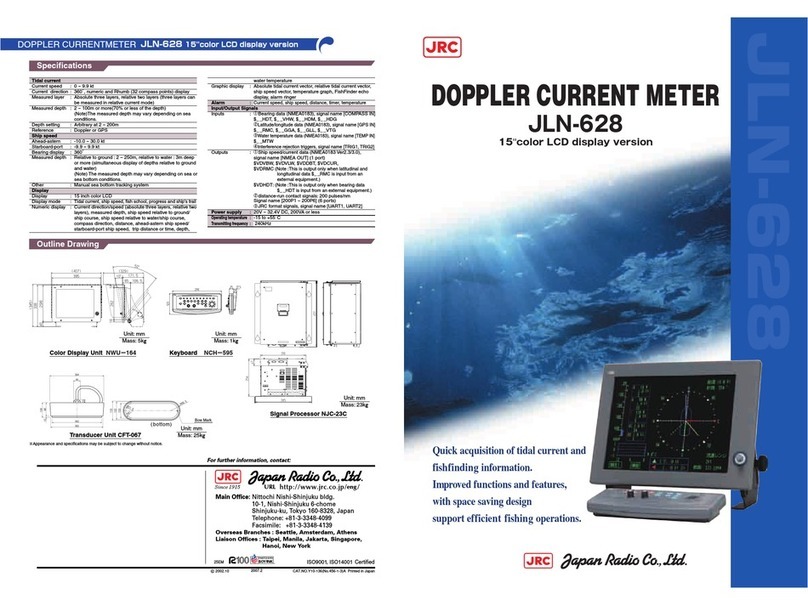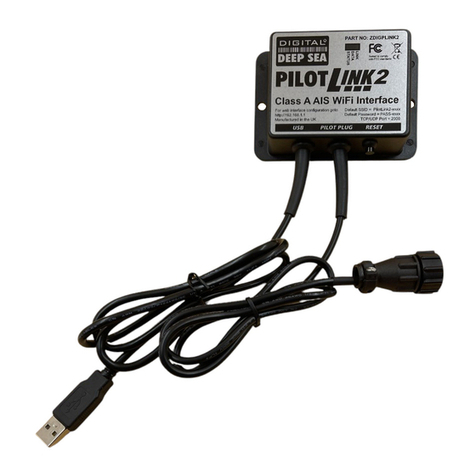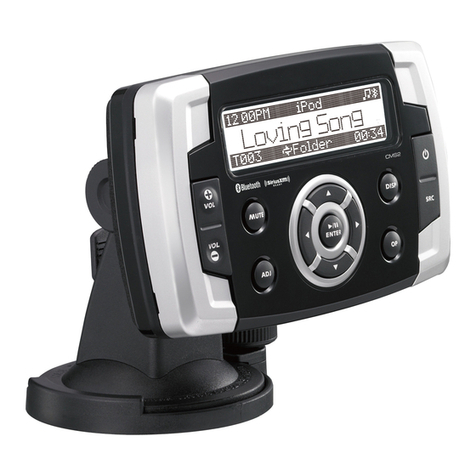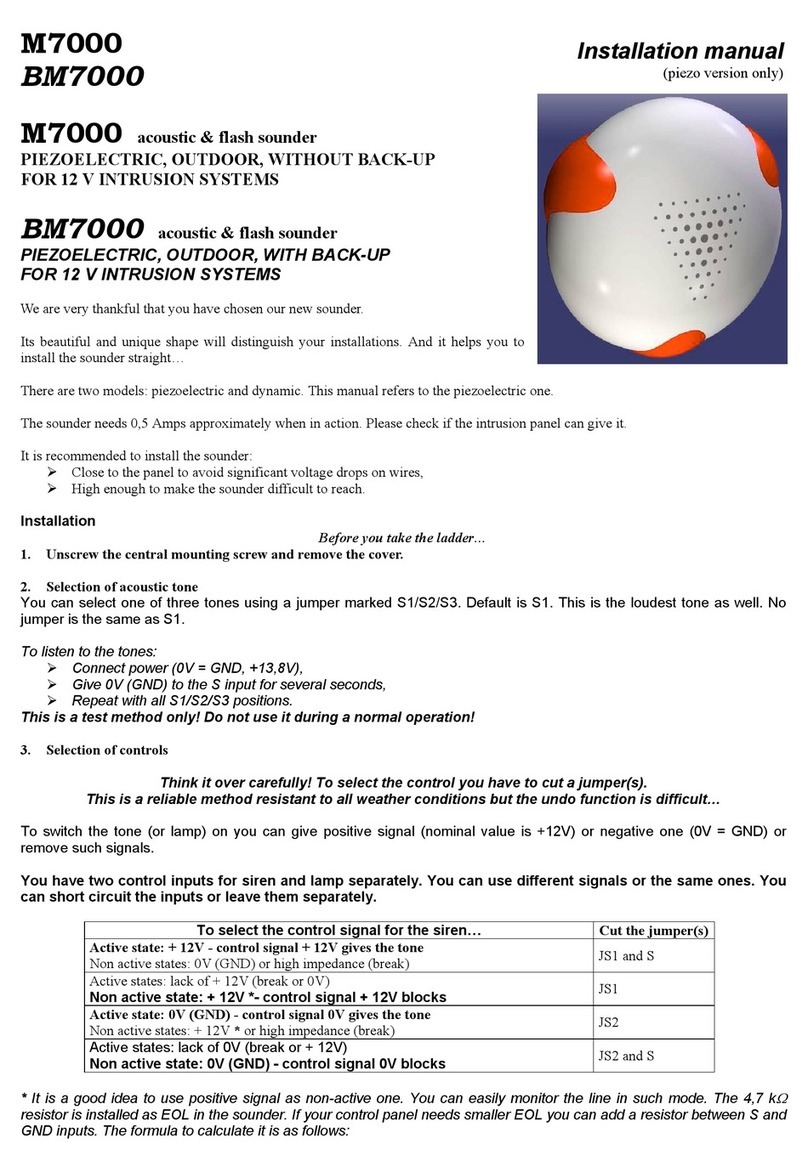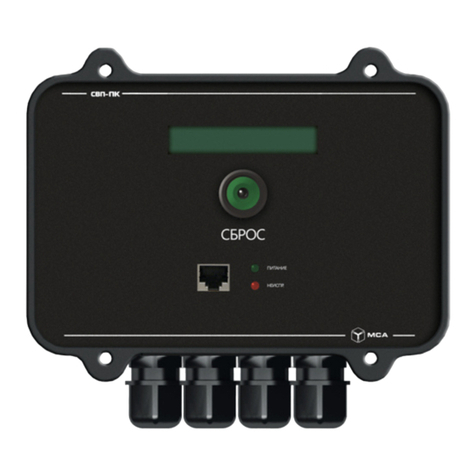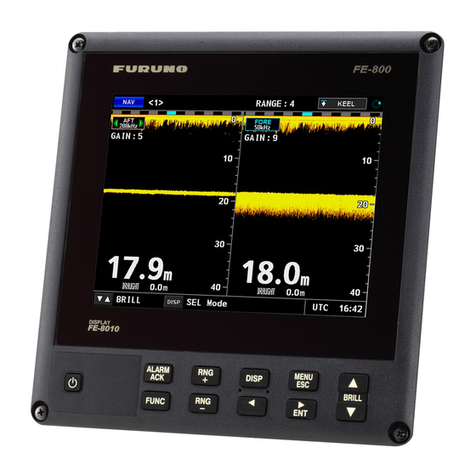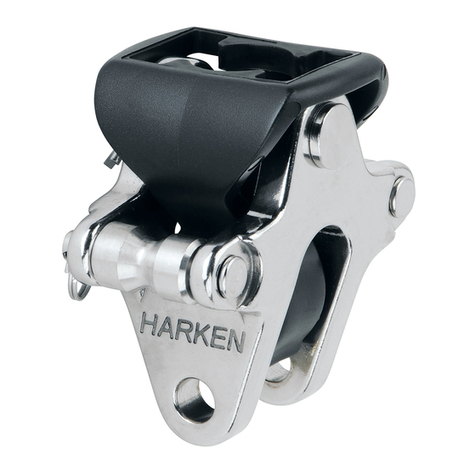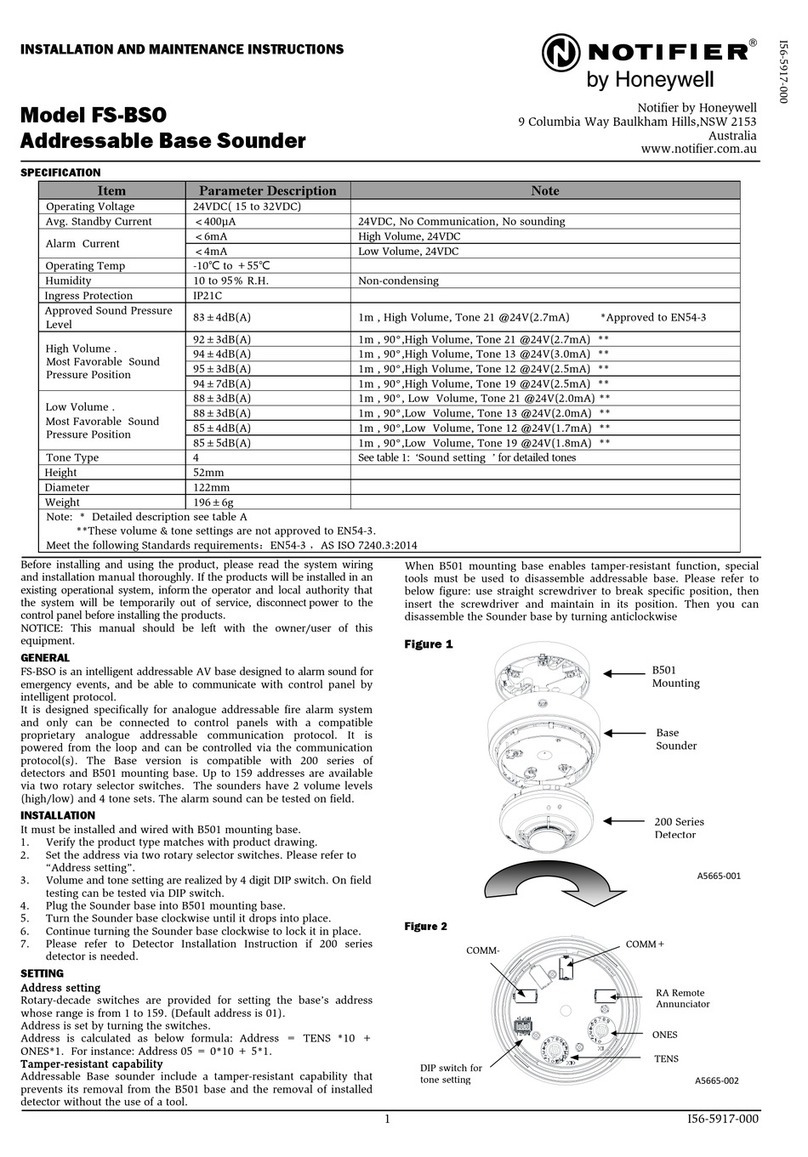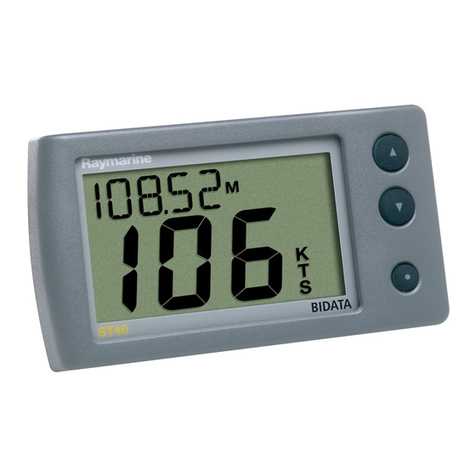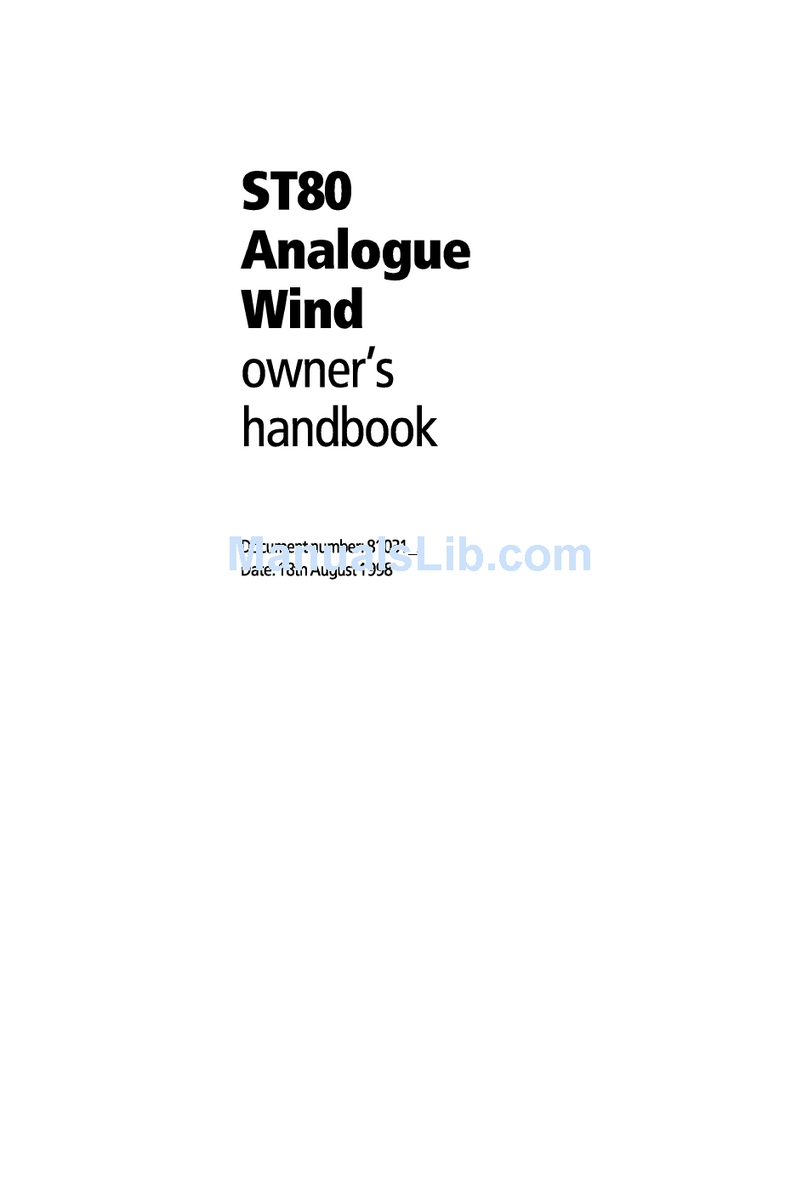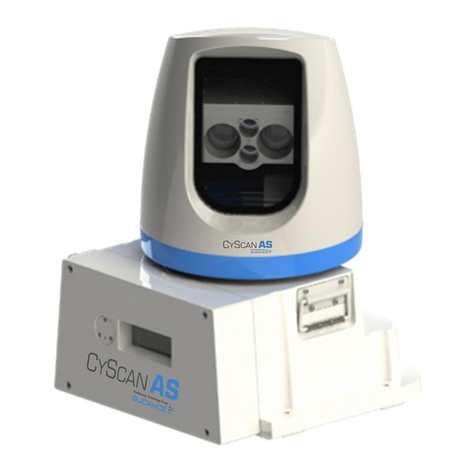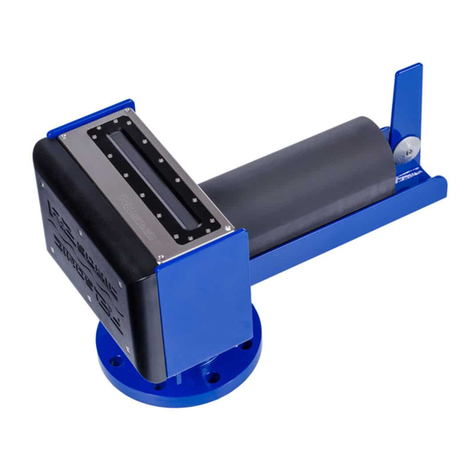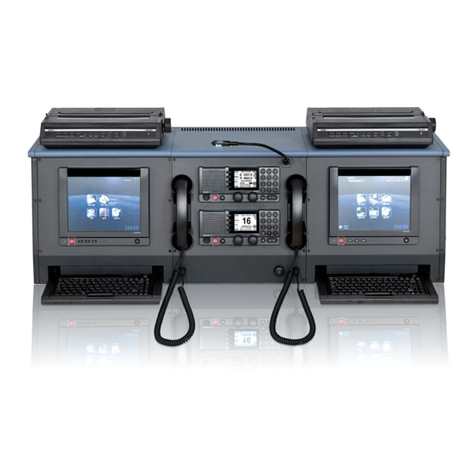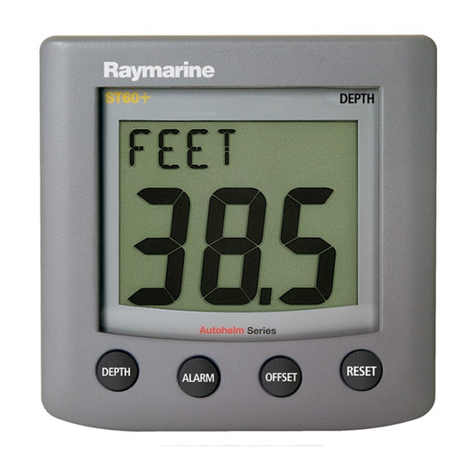
2EV21 SOUNDER TECHNICAL MANUAL TMF0048.A www.eaton.com
DISCLAIMER OF WARRANTIES AND LIMITATION OF LIABILITY
ENGLISH
The information, recommendations, descriptions and safety notations in this document are based on Eaton Corporation’s
(“Eaton”) experience and judgment and may not cover all contingencies. If further information is required, an Eaton sales
office should be consulted. Sale of the product shown in this literature is subject to the terms and conditions outlined in
appropriate Eaton selling policies or other contractual agreement between Eaton and the purchaser.
THERE ARE NO UNDERSTANDINGS, AGREEMENTS, WARRANTIES, EXPRESSED OR IMPLIED, INCLUDING
WARRANTIES OF FITNESS FOR A PARTICULAR PURPOSE OR MERCHANTABILITY, OTHER THAN THOSE
SPECIFICALLY SET OUT IN ANY EXISTING CONTRACT BETWEEN THE PARTIES. ANY SUCH CONTRACT STATES THE
ENTIRE OBLIGATION OF EATON. THE CONTENTS OF THIS DOCUMENT SHALL NOT BECOME PART OF OR MODIFY
ANY CONTRACT BETWEEN THE PARTIES.
In no event will Eaton be responsible to the purchaser or user in contract, in tort (including negligence), strict liability or
other-wise for any special, indirect, incidental or consequential damage or loss whatsoever, including but not limited to
damage or loss of use of equipment, plant or power system, cost of capital, loss of power, additional expenses in the
use of existing power facilities, or claims against the purchaser or user by its customers resulting from the use of the
information, recommendations and descriptions contained herein. The information contained in this manual is subject to
change without notice.
DEUTSCH
Die Informationen, Empfehlungen, Beschreibungen und Sicherheitshinweise in dieser Dokumentation basieren auf
den Erfahrungen und der Bewertung der Eaton Corporation („Eaton“) und sind unter Umständen nicht allumfassend.
Wenden Sie sich bitte für weitere Informationen an eine Vertriebsniederlassung von Eaton. Der Verkauf des in dieser
Informationsschrift gezeigten Produkts unterliegt den Allgemeinen Geschäftsbedingungen in den entsprechenden Eaton-
Verkaufsrichtlinien oder sonstigen vertraglichen Vereinbarungen zwischen Eaton und dem Käufer.
ES BESTEHEN KEINE VEREINBARUNGEN, VERTRÄGE ODER GEWÄHRLEISTUNGEN, EINSCHLIESSLICH GARANTIEN
DER GEBRAUCHSTAUGLICHKEIT FÜR EINEN BESTIMMTEN ZWECK ODER MARKTFÄHIGKEIT, AUSSER DEN KONKRET
IN EINEM ZWISCHEN DEN VERTRAGSPARTNERN BEREITS BESTEHENDEN VERTRAG DEFINIERTEN. JEDER DIESER
VERTRÄGE BENENNT ALLE PFLICHTEN VON EATON. DER INHALT DES VORLIEGENDEN DOKUMENTS WIRD NICHT
TEIL EINES VERTRAGES ZWISCHEN DEN PARTEIEN UND ÄNDERT DIESEN AUCH NICHT.
In keinem Fall ist Eaton gegenüber dem Käufer oder Benutzer vertraglich, aus unerlaubter Handlung (einschließlich
Fahrlässigkeit), verschuldensunabhängiger Haftung oder anderweitig für besondere, indirekte, zufällige oder Folgeschäden
oder -verluste jeglicher Art verantwortlich, einschließlich, aber nicht beschränkt auf Schäden oder Nutzungsausfall von
Geräten, technischen Anlagen oder Stromversorgungssystemen, Kapitalkosten, Stromausfall, zusätzliche Ausgaben bei der
Nutzung vorhandener Stromanlagen oder Ansprüche gegen den Käufer oder Benutzer durch seine Kunden, die sich aus der
Nutzung der hierin enthaltenen Informationen, Empfehlungen und Beschreibungen ergeben. Eaton behält sich Änderungen
der Angaben in diesem Handbuch ohne vorherige Ankündigung vor.
FRANCAIS
Les renseignements, recommandations, descriptions et consignes de sécurité mentionnés dans le présent document
s’appuient sur l’expérience et le discernement d’Eaton Corporation («Eaton») et peuvent ne pas couvrir toutes les
éventualités. Pour obtenir des informations supplémentaires, consultez un bureau de vente Eaton. La vente du produit
présenté dans le présent document est soumise aux conditions générales indiquées dans la politique de vente Eaton
concernée ou dans tout autre accord contractuel entre Eaton et l’acquéreur.
IL N’EXISTE AUCUN ACCORD, ENTENTE NI GARANTIE, EXPRESSE OU IMPLICITE, Y COMPRIS LES GARANTIES DE
CONFORMITÉ À UN USAGE PARTICULIER OU DE VALEUR MARCHANDE, AUTRES QUE CEUX EXPRESSÉMENT
ÉNONCÉS DANS UN CONTRAT EXISTANT ENTRE LES PARTIES. TOUT CONTRAT DE CE TYPE DÉCRIT L’ENSEMBLE DES
OBLIGATIONS D’EATON. LE CONTENU DE CE DOCUMENT NE DOIT PAS FAIRE PARTIE D’UN CONTRAT ENTRE LES
PARTIES NI LE MODIFIER.
En aucun cas Eaton ne saura être tenu responsable par l’acheteur ou par l’utilisateur partie au contrat, à tort (négligence
comprise) d’une responsabilité stricte ni de tout autre dommage ou perte particulier, indirect, accidentel ou conséquentiel,
de quelque type que ce soit, y compris sans y être limité tout dommage ou perte d’utilisation de l’équipement, de l’usine
ou du système d’alimentation, du coût de capital, de la perte de puissance, des dépenses supplémentaires engendrées
par l’utilisation de systèmes d’alimentation existants, ni de toute réclamation par des clients à l’acheteur ou à l’utilisateur
résultant de l’utilisation des présentes informations, recommandations et descriptions. Les informations contenues dans le
présent manuel sont susceptibles d’être modifiées sans notification préalable.
